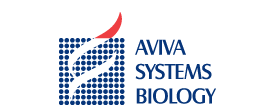
The Phosphoprotein Enrichment Kit provides an effective affinity-based procedure for isolating phosphorylated proteins from mammalian cells and tissues. Each kit includes a complete set of buffers along with six high-capacity columns for enrichment of both cytosolic and membrane-bound phosphoproteins, regardless of the amino acid modified—including serine, tyrosine, or threonine.
The Phosphoprotein Enrichment Kit provides an effective affinity-based procedure for isolating phosphorylated proteins from mammalian cells and tissues. Each kit includes a complete set of buffers along with six high-capacity columns for enrichment of both cytosolic and membrane-bound phosphoproteins, regardless of the amino acid modified—including serine, tyrosine, or threonine.
Our enrichment procedure offers a number of advantages:
- The procedure is fast; the average cell-to-sample purification time is less than 2 hours.
- It is also straightforward, consisting of four main steps: adding Extraction/Loading Buffer to the cell or tissue pellet to extract total cellular protein, loading the extract on an affinity column, washing, and finally eluting the bound phosphoprotein with a detergent-free Elution Buffer.
- A single buffer—Extraction/Loading Buffer—is used for both the protein-extraction and affinity-column steps, making buffer exchange unnecessary. This saves time and prevents sample loss.
- The procedure is nondenaturing, so phosphoproteins remain folded throughout the process, even during the extraction and elution steps.
Each column has a maximum binding capacity of ~4 mg of phosphorylated protein.
Highly selective enrichment of phosphoproteins
The Phosphoprotein Enrichment Kit may be used with any mammalian cell type. Cell lines tested include NIH 3T3, HEK 293, HeLa, Cos-7, and Jurkat. The enrichment procedure is highly efficient, as demonstrated by Western blotting analyses. Using a colorimetric phosphate detection method, we found the majority of the phosphoprotein in the eluate; negligible traces were detected in the wash fraction.
Phosphoprotein Affinity Columns yield a concentrated solution of phosphoprotein that can be analyzed by several different methods, including mass spectrometry and two-dimensional polyacrylamide gel electrophoresis (2D-PAGE).
ebiomall.com






>
>
>
>
>
>
>
>
>
>
>
>
制备抗体都需要进行纯化处理
又由于自然存在的抗原大都存在多个抗原表位,会刺激机体产生多种针对同一抗原的不同抗原表位相应的不同抗体.
清冷冻干燥后保存。
一般来说多克隆的阳性率高一些,但出现假阳性的比例也高一些。
抗体的特异性鉴定 抗体的特异性是指与相应抗原或近似抗原物质的识别能力。抗体的特异性高,它的识别能力就强。衡量特异性通常以交叉反应率来表示。交叉反应率可用竞争抑制试验测定。以不同浓度抗原和近似抗原分别做竞争抑制曲线,计算各自的结合率,求出各自在 IC50时的浓度,并按下列公式计算交叉反应率。 如果所用抗原浓度IC50浓度为pg/管,而一些近似抗原物质的IC50浓度几乎是无穷大时,表示 这一抗血清与其他抗原物质的交叉反应率近似为 0,即该血清的特异性较好。
抗体的亲和力 是指抗体和抗原结合的牢固程度。亲和力的高低是由抗原分子的大小、抗体分子的结合位点与抗原决定簇之间立体构型的合适度决定的。有助于维持抗原抗体复合物稳定的分子间力有氢键、疏水键、侧链相反电荷基因的库仑力、范德华力和空间斥力。亲和力常以亲和常数K表示,K的单位是L/mol,通常K的范围在 108 ~1010 /mol,也有多达 1014 /mol。抗体亲和力的测定对抗体的筛选,确定抗体的用途,验证抗体的均一性等均有重要意义。向左转|向右转









